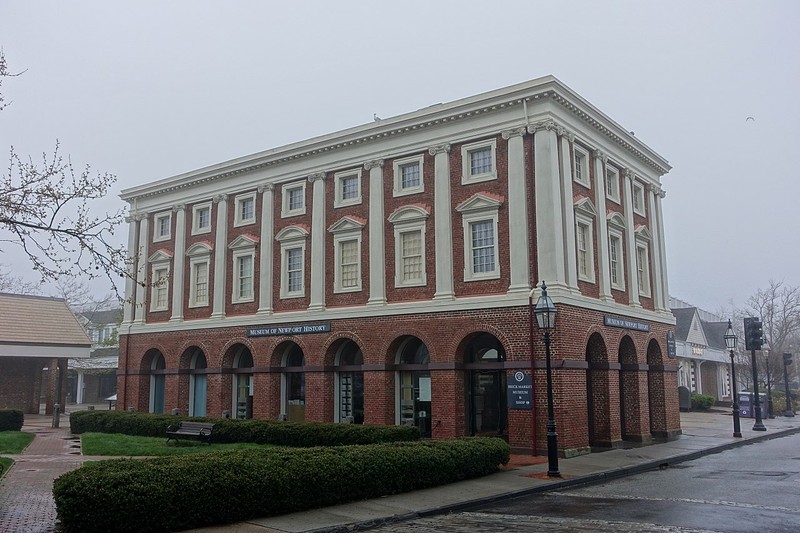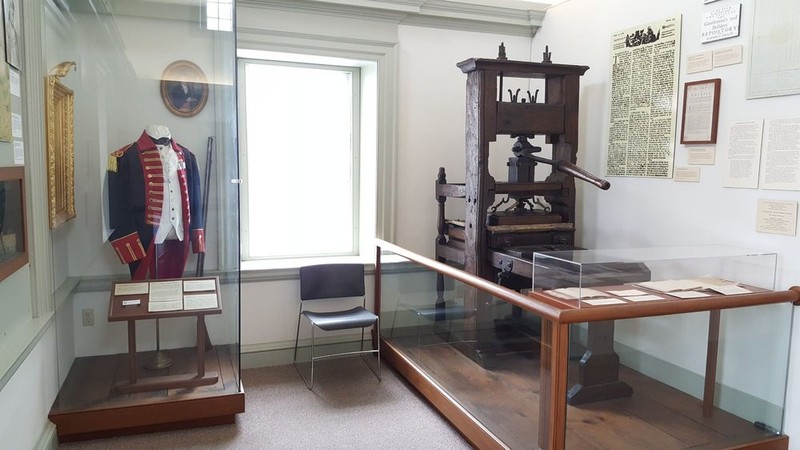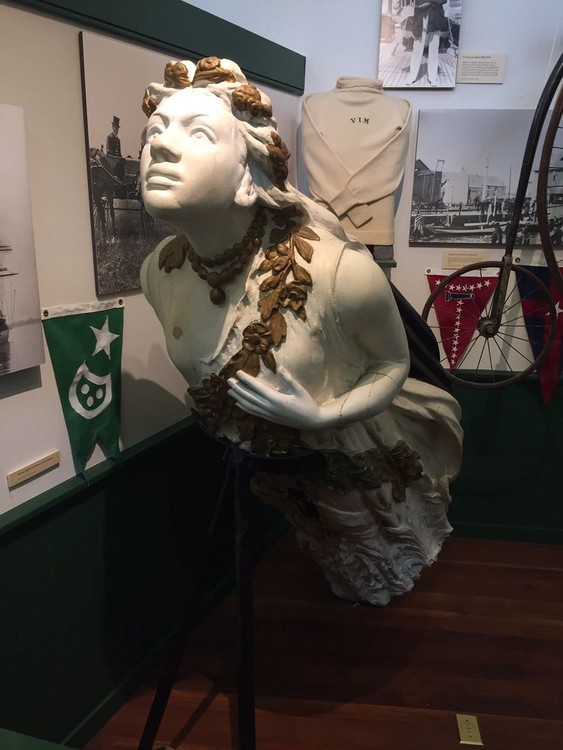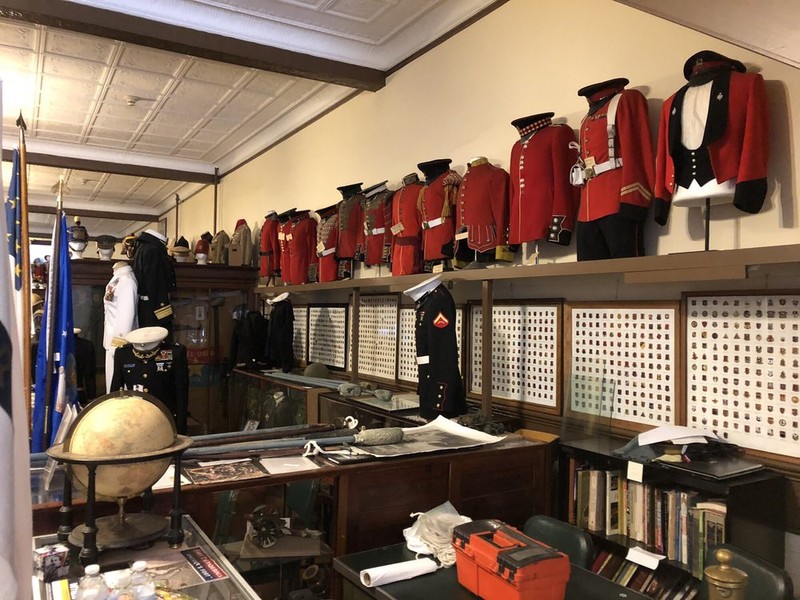Museum of Newport History
Introduction
Text-to-speech Audio
Images
Construction on the Old Brick Market, which houses the Museum of Newport History, began in 1762.

Artifacts on display within the museum, to include James Franklin's c. 1717 printing press.

A 1937 photo of the Old Brick Market.

The figurehead from the yacht, "Aloha," which served the U.S. during World War I.

Various military uniforms and other artifacts in the museum's storage space.

Backstory and Context
Text-to-speech Audio
In the 1760s, the proprietors of Newport’s Long Wharf sought to build a marketplace for their growing town and its commercial needs. To accomplish this goal, they secured the services of architect, Peter Harrison, considered by many to be America’s first professional architect. Harrison designed a building based on British Inigo Jones’ Somerset House which Harrison found in Colin Campbell’s architectural book, “Vitruvius Britannicus.” The two major alterations Harrison made were to construct his building with brick rather than stone and to use Ionic pilasters rather than Corinthian. Harrison’s building also featured a low, hipped roof; large, arched openings on its first floor; rectangular, six-over-six windows on its second floor with alternating gabled and segmented-arch pediments, and a dentilated cornice just below the roof.
The building’s first floor went up as planned in 1762. However, the proprietors ran out of funds and the first floor was roofed with plans to continue construction when more funds were secured. The city eventually stepped in with funding, and the marketplace building was finally completed in 1772. The city, in return for its funding, placed profits from the building in its treasury in order to establish a granary for the town. Its arched doorways on the first floor were left open and the marketplace within sold a variety of goods to Newport’s residents.
As for its upper floors, they housed various offices and businesses, to include a printing company and theater which operated until 1799. The third floor was removed in the mid-19th century and the 2nd floor was converted into a single, large room with galleries on three sides. During this period, the first floor’s arched doorways were enclosed with windows and doors to accommodate retail space. In the late 1920s, the building underwent a major renovation led by Norman Isham during which the third floor was rebuilt and the exterior was completely restored. During the late 1950s and early 1960s it was used as a crafts shop and housed the offices of the Preservation Society of Newport County.
In 1993, while the city maintained ownership, it permitted the Old Brick Marketplace to be used by the Newport Historical Society to house its Newport Museum of History and it has been used for this purpose ever since. While the Newport Historical Society is headquartered on nearby Touro Street, its museum is home to over 10,000 historical artifacts, 500 paintings, prints and maps, and 200,000 photographs. Its featured possessions include James Franklin’s (older brother of Benjamin) 18th century printing press imported from England, a c.1740 oil on wood painting of the Potter Family, and the 1910 figurehead from the yacht, “Aloha” which served the U.S. during World War I. The museum also serves as a jumping off point for guided walking tours to include its annual February Colonial Newport Lantern Tour which is part of the city’s Winter Festival.
The museum offers rotating exhibits and recent ones have included “History Mystery: The Newport Tower” which encourages guests to become historical detectives, and “Craftsmen and Consumers: Transatlantic Commerce in 18th Century Newport.” The historical society, aside from the Old Brick Marketplace, owns or operates five other historic properties; the Wanton-Lyman-Hazard House, Great Friends Meeting House, Seventh Day Baptist Meeting House, Colony House, all located in Newport, and the Green End Fort in Middletown. Lastly, the museum houses its History Space which offers immersive programs such as reenactments, historical trade and craft demonstrations, workshops and seminars.
Sources
Snell, Charles and Patricia Heintzelman. "National Register of Historic Places Nomination Form: The Brick Market." United States Department of the Interior/National Park Service. January 9, 1975. Accessed February 5, 2020. https://npgallery.nps.gov/NRHP/GetAsset/NHLS/66000019_text
Pfeiffer, Brian. "1762 - Newport, RI - 127 Thames Street - The Brick Market." Archipedia New England. Accessed February 5, 2020. http://www.archipedianewengland.org/1762-newport-ri-127-thames-street-the-brick-market/
"Historic American Buildings Survey: Brick Market, 127 Thames Street, Newport, Newport County, RI." Library of Congress. Accessed February 5, 2020. https://loc.gov/pictures/item/ri0041/
"Museum & Shop." Newport Historical Society. Accessed February 5, 2020. https://newporthistory.org/museum-shop/
